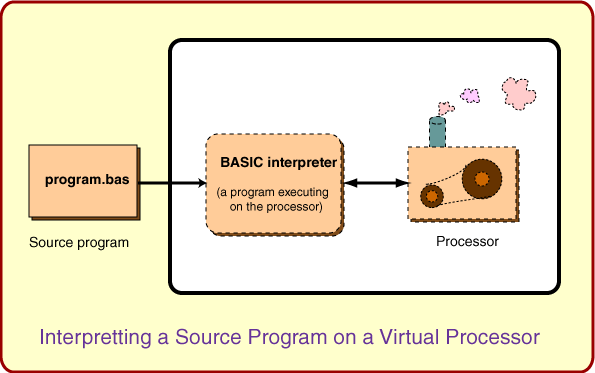Virtual Machine
When an interpreter is running a BASIC source program, both the interpreter and the source program are in main memory. The interpreter consists of machine instructions that the hardware can execute directly. The BASIC source program consists of commands in the language BASIC that the interpreter knows. From the perspective of the BASIC program, it looks like the commands in BASIC are being directly executed by some sort of machine. Here is the figure, modified to show this:

This is really the same as the previous figure, but now a box has been drawn around the actual (hardware) processor and the interpreter that it is executing. The combination "looks like" a machine that can directly act upon BASIC source programs. The word virtual is used in situations where software has been used to make something look like the real thing. In this case it looks like we have a machine that can directly execute BASIC, so we can say that we have a BASIC virtual machine.
